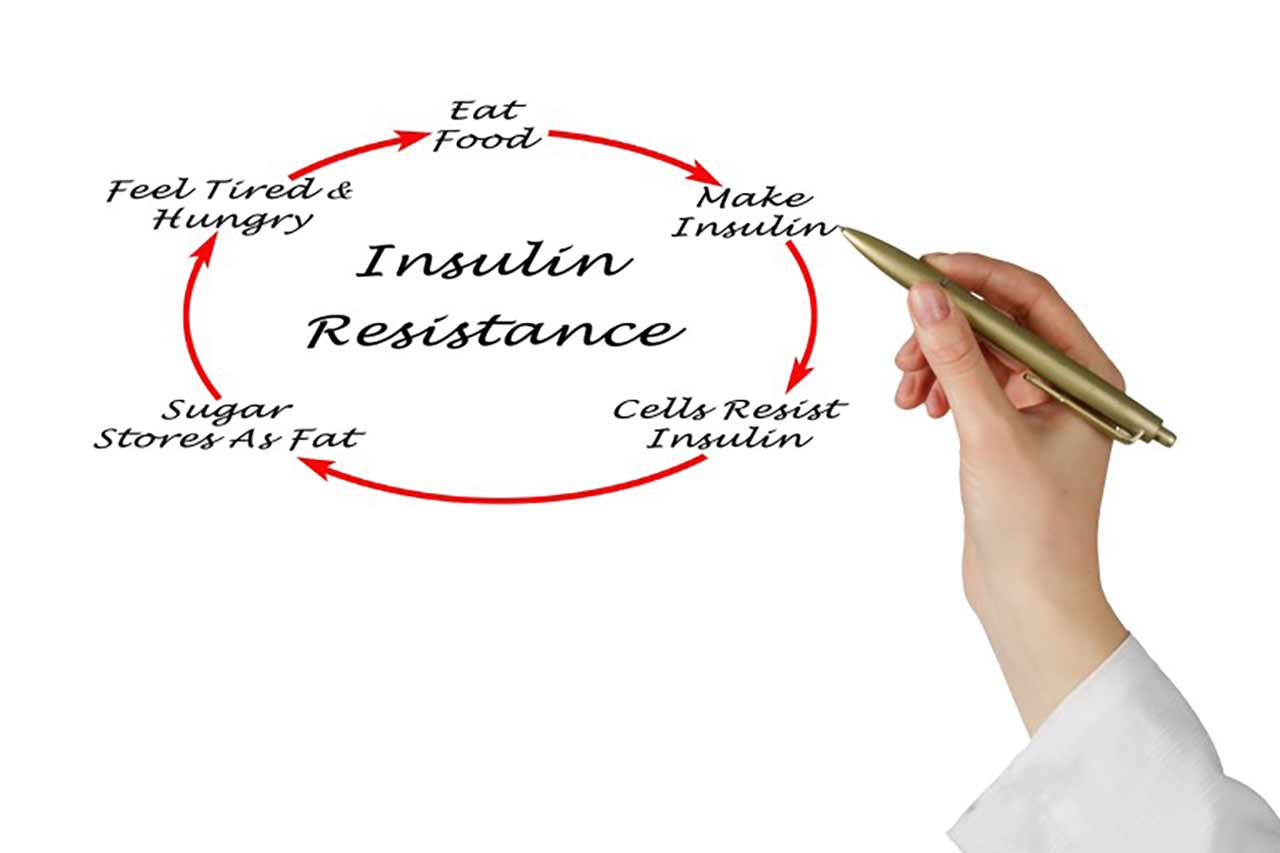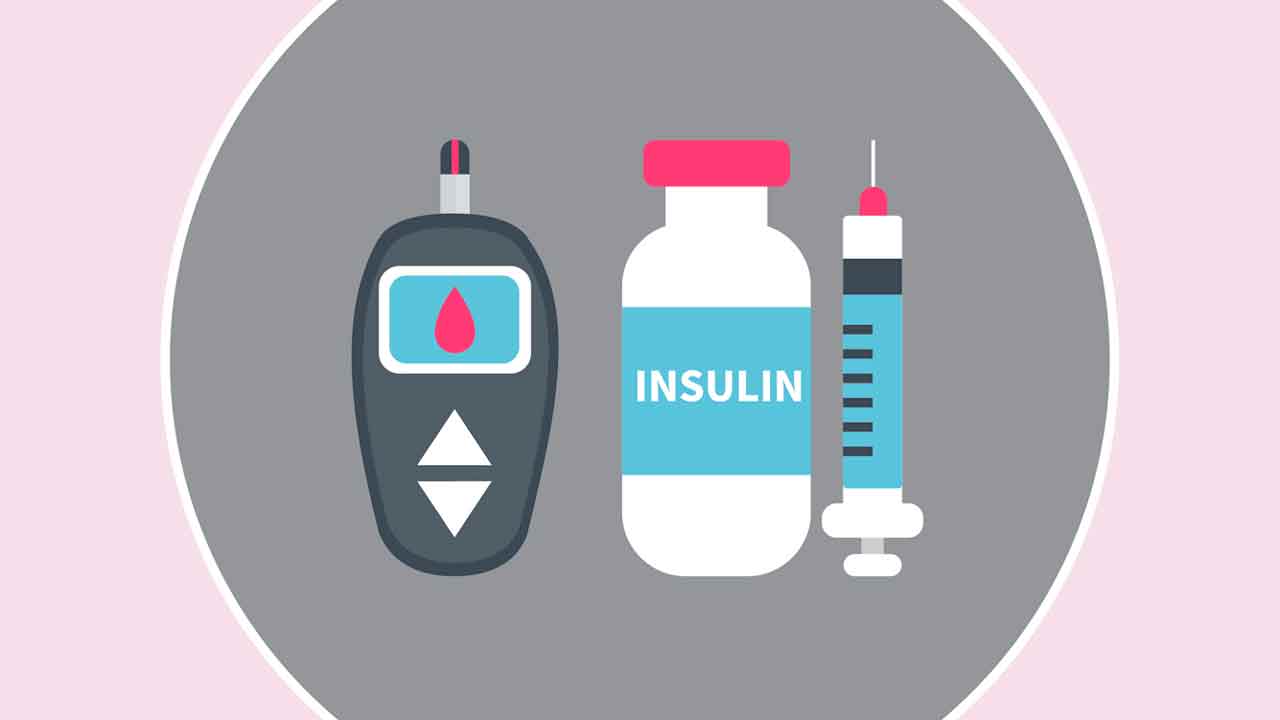

written by : DOMINIK VANYI
translated from Indonesian by: JAH DEWA GAUTAMA
What is Insulin Resistance?
The treatment and curing of disease/illness begins with an understanding of the underlying causes.
It is vital for those who suffer from Type 2 Diabetes to understand the disease and the underlying condition. Without knowing the root cause of the disease, it will be impossible to properly treat and cure it.
As it turns out, the information and explanations that are given by the medical establishment is often rather inaccurate. What makes it worse, is that many people are too gullible toward what the media or the medical world tells them.
Things get worse once ‘Big Pharma’ comes into the picture. As their primary goals are healthy profits, not healthy people.
Because of this, I have decided to write some articles in which you can learn what Type 2 Diabetes really is. And, more importantly, what you can do to treat it with maximum effectiveness.
Insulin is everything
Perhaps you may have heard about the relationship between Type 2 Diabetes and Insulin. Or better yet, have heard of the term ‘Insulin resistance’.
But perhaps you are still a bit unsure about the true nature of the relationship between Diabetes Mellitus and Insulin Resistance.
Well, in this article I will explain the link between Type 2 Diabetes and Insulin. And we will also get into the meaning of Insulin resistance.
So let’s dig in, shall we?

The role of Insulin
Any and every occurrence in our bodies is regulated by hormones. These hormones send off signals of all kinds throughout our bodies.
When we feel tired, hungry or even aroused, it is regulated by hormones. And one of these hormones is Insulin. Insulin functions as a regulator for glucose (sugar) levels within our blood.
Here we see that there is a relationship between Insulin and our blood levels. And we all know that Type 2 Diabetes is a disease in which we have too much sugar within our blood.
The main functions of Insulin are:
- To distribute sugar (in the form of glucose) to cells around the body
- To store excess sugar as fat
- Prevent our bodies from using fat from fat cells as an energy source
Whenever we eat or drink something that contains sugar or carbohydrates, our bodies will produce Insulin to handle the sugar and ‘carbs’ we have just consumed.
Our bodies produce Insulin in an organ called the Pancreas.
When all is well, and we are healthy the production of Insulin and its regulation of our blood levels goes smoothly.
But, if we consume too much sugar and carbs for a prolonged period of time, say years, the process of ‘regulation of blood sugar through Insulin’ will be disturbed.
And we refer to this disturbance as ‘Insulin Resistance’. Now, let’s take a look at the mechanisms behind Insulin Resistance.

INSULIN WORKS LIKE A KEY TO OPEN CELLS TO ACCEPT GLUCOSE
So what does Insulin Resistance mean?
The way in which Insulin regulates the sugar levels in the blood is by sending signals to the cells of our body to ‘open their doors’ so that glucose can enter. Insulin can be seen as a key to the cells.
As the sugar enters our cells, the amount of sugar within our bloodstream decreases, and with it, our blood sugar levels return to normal.
However, if we constantly consume too much sugar and carbohydrates, over time, our cells’ locks become harder and harder to open to accept the glucose in our blood.
THE SCIENCE OF INSULIN
Every cell has several Insulin receptors and Insulin will attach itself to these receptors. Within the membranes of the cells, there are channels for the glucose to enter. And those channels open when the Insulin latches onto the cell’s receptors.
Then, the glucose will enter into the cells whereby through a process called Glycolysis the cells’ Mitochondria (a part of the cell) turn the glucose into energy.
Becoming dysfunctional towards Insulin is what we call Insulin Resistance.
In ignoring the Insulin, the cells refuse the intake of sugar. And our body responds to this by producing even more Insulin.
Please note that Insulin resistance is a condition that develops slowly and requires years to become a problem.
If left untreated, it can become a severe condition. Unfortunately, Insulin resistance is only diagnosed as Type 2 Diabetes when it already a serious problem.
By allowing Insulin Resistance to continue to develop, we enter into a vicious circle. To further understand the vicious circle please explore this article: INSULIN – THE VICIOUS CIRCLE.
This is because our pancreas notices that there is too much sugar in our blood, and therefore will produce more Insulin.
And only when a Type 2 Diabetes sufferer has been suffering from Diabetes Type-2 for a long time, will the Pancreas become ‘broken’ and can no longer produce enough Insulin.
Continuously Rising Insulin Levels become: HYPERINSULINEMIA
Due to the cells not responding to Insulin, more Insulin will be produced to open the pathway for the sugar. At first, this method, along with the production of more insulin is an effective strategy.
Effective in the sense that our blood sugar levels will decrease as desired.
But over time, what happens to people who are Insulin Resistant is that to regulate our blood sugar levels our bodies require more Insulin than it usually does.
The need for and the overproduction of Insulin is referred to as: HYPERINSULINEMIA.
And because our cells are ignoring the sugar molecules and not letting them in, it requires a longer time to move the sugar from the blood into the cells.
This is why people who have Type 2 Diabetes, more often than not, have high blood sugar levels.
Everyone, even healthy people, that have not become Insulin Resistant will also experience spikes in blood sugar levels. But only for a short period of time and returns to regular levels quite quickly.
What happens to those who suffer from Type 2 Diabetes is that the amount of Insulin needed to handle and process the sugar in the blood is ever increasing.
But producing more Insulin our cells become even more resistant. And here the ‘madness of modern medicine‘ further amplifies the situation. How ? By giving patients exactly the same substance that has caused the disease.
Treating T2D with even more Insulin is like trying to put out a fire with gasoline.
Despite this, many people who suffer from Diabetes Type-2 are told to consume external Insulin. Weird, but true…

THE CAUSE AND CONSEQUENCE OF INSULIN RESISTANCE
Insulin resistance advancing into Type 2 Diabetes is a slow process
Insulin Resistance is not something that happens overnight.
At first, we are only a little bit resistant and our bodies are able to compensate by producing more Insulin.
And as long as the Insulin resistance has not become severe, the processing of blood sugar levels is not compromised. And not everyone who becomes Insulin resistant will develop Type 2 Diabetes.
Insulin resistance only develops into Type 2 Diabetes when, in spite of the overproduction of Insulin, blood sugar levels become too high.
In other words, Type 2 Diabetes is only diagnosed when Insulin resistance has already become a severe issue.
Would Insulin Resistance be diagnosed in its early stages it could be easily beaten with changes to diet and patients would not become Diabetic.
Insulin resistance can be examined in a large hospital or laboratory, yet it is hardly ever done.
Insulin resistance is a modern disease
If you ask why so many people develop Type 2 Diabetes and the causes of Insulin resistance, the answer is rather simple:
Mainly too much sugar and carbohydrates in our diet.
However, there are many other contributing factors such as inappropriate eating patterns or eating too much or too often. And there are several other factors that seem to corelate with Diabetes Mellitus yet causality has still to be established.
Up until around 100 years ago, Type 2 Diabetes was a very rare disease.
It turns out that throughout the 19th century, Type 2 Diabetes was seldom found. It was only around 1930 and onwards, did Type 2 Diabetes become prevalent.
And in the 1970s and 80s, the disease started to became a problem. And this correlates with the rise of Obesity.
Not everyone who is Insulin resistant develops Type 2 Diabetes. It is a long process, a vicious cycle that can take years to develop severely and become Diabetes Mellitus.
The increase of sufferers of Type 2 Diabetes tends to be quite similar in the developing world.
This is because, in 3rd world countries, Type 2 Diabetes is still a relatively new disease. People in those countries who still live in a more traditional way, without refined sugars and too many snacks are not affected. They do not suffer from this modern disease.
Whereas the people who suffer from Diabetes Mellitus are those who have transitioned into a more ‘modern’ lifestyle with larger dosages of sugar and processed foods.
All of our bodily functions have been designed and shaped by evolution for hundreds of thousands of years. And our ancestors did not consume such processed foods, let alone sugars or carbohydrates.
Another thing: our ancestors did not eat that often either. Us modern humans are constantly snacking and are often drinking sweet beverages such as soft drinks or coffee/tea with sugar.
And these days, we can get snacks anywhere, 24/7 shops, delis and even late-night restaurants.

THE TAKEAWAY
Now, it should be quite clear that Type 2 Diabetes is a disease that stems from our bodies becoming resistant to Insulin.
Hence, our bodies are unable to process sugar properly, leading to increased blood sugar levels.
And if we want to discuss treating Type 2 Diabetes, we must first direct our focus toward Insulin resistance.
Many sufferers of Type 2 Diabetes have cured themselves by addressing Insulin resistance. This can be done without medication, just by interventions to their diets, lifestyle and regular fasting.
And this explains the root cause of Type 2 Diabetes.
In case you feel you would like help in treating Type 2 Diabetes or would like to check your Insulin resistance, please contact me or leave a comment below.
👉Greetings from wonderful BALI👈
DOMINIK🙏🙏🙏

0 Comments